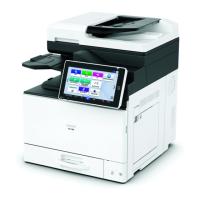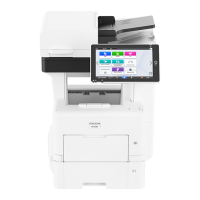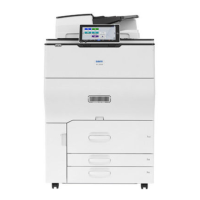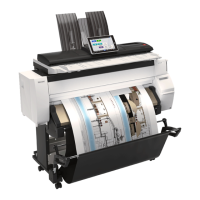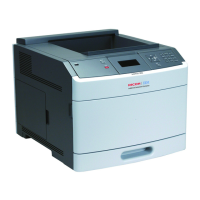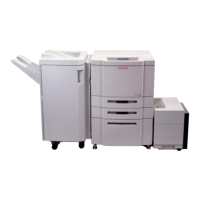EN 305Fax error codes and messages
356, 357, 358, 359, 361, 362 ECM, 363 ECM, 364 ECM, 365 ECM, 366 ECM: Multiple causes:
• Stop key was pressed on the receiving fax machine before the fax completed. Contact the person
receiving the fax to see if they are cancelling the transmission. If not, send the fax again but at a slower
transmission speed.
• Fax failed before completing due to no paper, and error state, or a paper jam in the receiving fax.
• Call waiting service made a click sound that is heard for an incoming call, momentarily disconnecting the
fax call. Disable Error Correction Mode (ECM) if necessary.
• An incompatible feature caused the receiving fax machine to end the call.
367, 368, 369, 370, 371, 372 ECM, 373 ECM, 374 ECM, 375 ECM, 376 ECM, 377 ECM, 378, 379: Receiving
fax machine may be locked. Try sending to a different fax machine.
380 ECM: Receiving fax machine failed to issue a valid response to a CTC frame. This occurs during Error
Correction Mode (ECM) transmission after trying repeatedly to send a fax. Disable Error Correction Mode (ECM),
and then try again. If the error still displays, the receiving fax machine may be defective.
381 ECM, 383 ECM: Receiving fax machine failed to respond to a fax command because the connection was
interrupted. The stop key might have been pressed on the receiving fax machine before the fax completed.
Contact the person receiving the fax to see if they are cancelling the transmission. Check for poor line
conditions. Call the telephone provider if line conditions fail to improve. Disable error Error Correction Mode
(ECM) if necessary.
382 ECM: Receiving fax machine held the transmission because of a temporary low memory condition. The
connection terminates if the holding period times out. Send the document as several smaller documents at a
lower resolution.
384: Sending fax machine attempted a black JPEG transmission to a machine that does not support this mode.
Send the fax using a different mode.
386, 387, 388, 389, 390, 391, 392, 393, 394, 395: Too much noise on the telephone line is preventing a valid
connection between the fax machines. Retry the fax when line conditions improve.
396, 397, 398, 399: During a V.34 transmission, the sending fax machine cannot connect with the receiving
machine and is unable to send a T30 frame. Remove any pass-through devices from the phone line, and then
confirm the cable is no longer than required and is not near unshielded electric motors such as fans, heaters,
or household appliances. Additionally, check for poor line conditions, and then resend when the conditions
improve.
400, 401, 402, 403, 404, 405, 406, 407, 408, 409, 410, 411, 412, 413, 414, 415, 416, 417, 418, 419: During
a V.34 transmission, the sending fax machine cannot connect with the receiving machine and is unable to
send a T30 frame. Remove any pass-through devices from the phone line, and then confirm the line cable is no
longer than required and is not near unshielded electric motors such as fans, heaters, or household appliances.
Additionally, check for poor line conditions, and then resend when the conditions improve.
420, 421, 422, 423: Poor line conditions or an incompatible fax format was detected with the receiving fax.
422, 423: Poor line conditions or an incompatible fax format such as color faxing was detected with the
receiving fax.
430: Sending fax machine cannot send continuous tones after sending control data and before sending the fax
data. Poor line conditions or a problem with the fax modem can cause this error. Call the telephone provider if
line conditions fail to improve.
431: Sending fax machine did not receive a response after terminating a transmission. This might occur
normally when the fax is intentionally cancelled. Poor line conditions might have prevented the response.
440, 441, 442, 443, 444: After one or more partial pages were sent, the control channel connection
(handshake) failed to restart before sending more data. This occurs when the receiving fax disconnects due to
poor line conditions after part of a page is received, or if it uses an incompatible fax format such as color faxing.
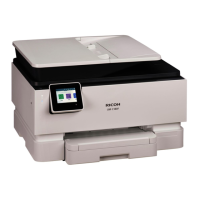
